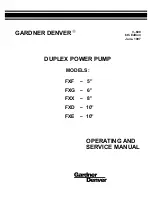
3
3. Technical data
Output voltage:
4-15 V DC, 400 mA
0-50 V DC, 10 mA
0-300 V DC, 0-200 mA
0-350 V DC*, 0-10 mA
*with common ground
Ramp generator:
linear ly rising or falling
values, 2.5-50 V/s,
0-300 V
Ripple voltage at
full load:
10 mV
rms
Voltage stability:
at 10% mains voltage:
< 0.2%
between no-load opera-
tion and full load:
< 0.5%
Power consumption:
75 VA
Timer relay:
50 V, 150 mA
Mains voltage:
See rear
Dimensions:
240 x 230 x 170 mm
3
Weight:
3.7 kg approx.
4. Operation
Connect the equipment via the mains lead to
the mains power supply. Switch on the
green ON/OFF button. The equipment is
immediately ready for use.
Select the desired voltage from the available
voltage ranges depicted on the front panel.
In order to operate the ramp generator,
switch on the ON/OFF switch for the ramp
generator and set the rotary switch to
“STOP”.
Use the voltage regulator (0-300 V) to set
the final value of the voltage ramp.
Set the desired ramp using the rotary switch.
If the rotary switch is turned to the left from
the STOP position, the voltage at the output
connec
tors of the DC 0…300 V voltage field
increases linearly from 0 to the set final value
of the ramp voltage. If the rotary switch is
turned to the right from the STOP position, the
voltage decreases from the set final value to
0. It is possible to halt at an intermediate val-
ue by switching back quickly to “STOP”. After
this, you can continue the process of either
increasing or decreasing the voltage from/to
0 V by turning the rotary switch accordingly.
5. Storage, cleaning and disposal
Keep the equipment in a clean, dry and
dust-free place.
Before cleaning the equipment, disconnect it
from its power supply.
Do not clean the unit with volatile solvents or
abrasive cleaners.
Use a soft, damp cloth to clean it.
The packaging should be disposed of at
local recycling points.
Should you need to
dispose of the equip-
ment itself, never throw
it away in normal do-
mestic waste. Local
regulations for the dis-
posal
of
electrical
equipment will apply.






















